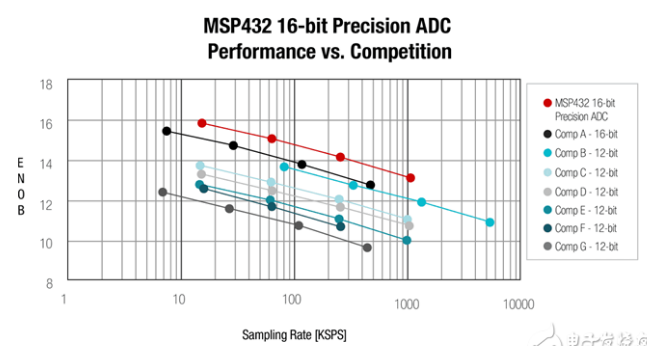The Google search term "analog converter selection" generated thousands of hits, proving that this task continues to challenge many of us involved in designing elusive perfect sensing solutions. After all, simple 10-bit ADCs that are integrated from 8-bit microcontrollers (MCUs) to ADCs that can resolve at GHz have a large number of analog-to-digital converter (ADC) solutions. Unless you are designing a dedicated sensing front-end, you are probably looking for an integrated ADC that can achieve high-quality performance without sacrificing power savings or operational flexibility. In this article, I listed some parameters that can help you narrow down the scope of the ADC search, but depending on the specific needs of your application, you may have other parameters.
Resolution. Perhaps the most debated ADC parameters, there are many questions about whether the number of bits that the ADC can solve is the most important measure of its accuracy. A simple way to look at it is by checking the application's actions after ADC conversion. For example, to measure whether a temperature change has occurred, is it a relative measurement? If so, a 10-bit or 12-bit ADC is sufficient, because it is a true fake - no problem. On the other hand, consider products such as electricity meters. In this application, analog-to-digital conversion requires a high degree of accuracy. The accuracy of the load current measurement may imply a difference in energy usage and therefore billing the utility company.
This type of application typically uses a >16-bit delta-sigma ADC at the sample rate. The sampling rate of the ADC directly depends on the input frequency. Thanks to our scholar friend Nyquist, you know that the ADC must sample with > 2x the input signal (Fsample ≥ 2x Finput) and you know there is a minimum required sample rate. For example, a 100 kHz input needs to sample at ≥200 kHz. However, the sampling rate specified in the data sheet only covers the true "sampling + conversion" clock - and does not take into account any set-up time of the ADC. Post-processing converted results are used to make decisions or to move off-chip data. These factors are also important because they enable you to calculate the period and duty cycle of the ADC conversion and therefore calculate the remaining margin of the post-processing.
For example, an ADC sampling of 1 MSPS will collect 1,000 16-bit samples in 1 ms. If you use the double-buffering method to capture ADC samples, you know that you have ≤1 ms to post-process the data buffer, take action based on the results, and may move the data before the next data set is ready for processing.
Reference selection. An important criterion when evaluating integrated ADCs is the availability of internal precision reference sources. In some cases, the ability of the sensor to set multiple reference voltage ranges ensures flexibility to resolve the different input ranges of the ADC.
Operating range. Many ADCs operate within a limited portion of the total supply voltage range available to the device. It is very important to evaluate the application's needs in this area. For example, in battery-powered applications, it may be desirable to minimize the supply voltage range (1.8V is quite typical for MCUs, although some of TI's SimpleLinkTM MSP432P4 family can operate below 1.72V) to ensure reliable conversions Until the device is turned off.
Input channel. The number of input channels is not just the number of externally available pins that can be used to connect analog inputs. When selecting an ADC for a group of inputs that need to be sorted, it is also important to consider the flexibility of the channel configuration. Optional reference sources, dedicated interrupt and conversion registers, and availability of differential inputs and configurable data formats are important features that ensure that you can set up the ADC configuration efficiently and set it up in a customizable way, preventing wasted cycles during installation.
Depending on what the application is trying to sense, your actual ADC selection criteria may be longer. You can quickly get online tutorials on using precision ADCs by purchasing the MSP432P4 LaunchPadTM Development Kit and through our SimpleLink Academy training portal to evaluate the MSP432P4's high performance ADCs and provide up to 16-bit accuracy. If you want to delve deeper into the topic of ADC selection, see how TI's MSP432P4 high-precision ADC can be stacked on the market with up to a few analog-to-digital converters. The ITW switch takes a look at the chart in Figure 1 below and examines our Request a report and useful hints to reveal ADC data table parameters.

Figure 1: Performance of the MSP432 16-Bit Precision ADC Compared to the Competition





